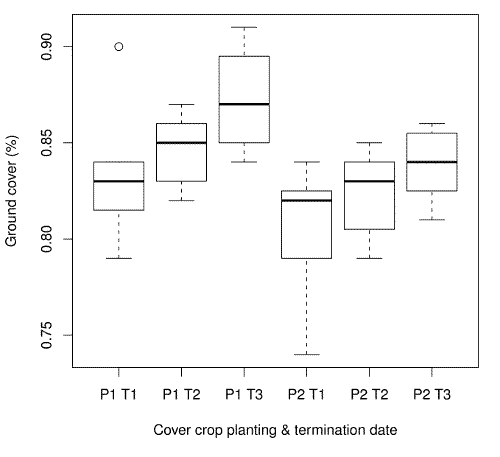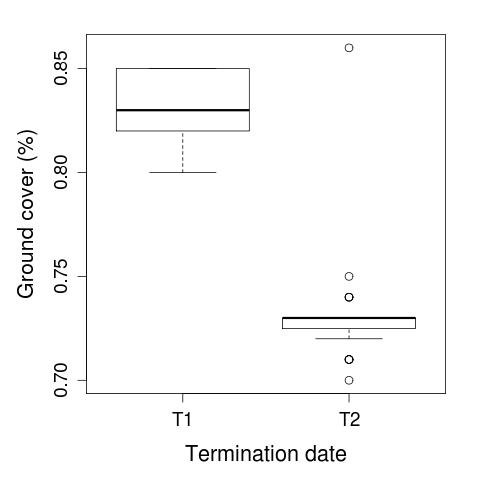- To demonstrate the effectiveness of this method, consider the following analyses. Both deal with the ground cover of cover crop species which were sown in the fall, and then killed (terminated) in the spring before cash-crop planting, to create a "mulch" in the field into which the cash crop can be planted. We expect that earlier planting and later termination should increase ground cover, as they allow time for more growth.
-
For images acquired on a single day, the ground cover estimates conformed to our expectations that cover should be greater for later termination date and earlier planting date (Figure 5).
Earlier planting (P1) and later termination (T2, T3) increase ground cover in a cereal rye cover crop

-
Differences in image exposure can be problematic. Data suggest that earlier terminated hairy vetch cover crops had greater ground cover (Fig. 6E), but this is likely an artifact of differences in lighting - strong direct lighting in the images of the late terminated vetch created very dark shadows, which were interpreted as soil (Figure 6C, 6D)
Later termination of a hairy vetch cover crop seems to reduce ground cover. Why?

Photos Below:
The stronger lighting creates more shadows, which are interpreted as bare soil, since they are dark.
The take-home message: lighting and exposure are very important, and day-to-day variability in these conditions may limit the ability to compare images acquired on different days.
This could be overcome by using some "standard" that was imaged and analyzed as part of every batch of images for comparison.
Notice that the image for second termination has more direct lighting and stronger shadows.

